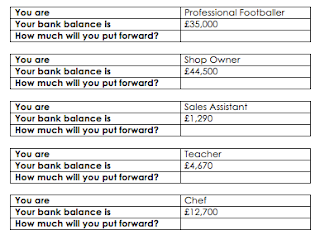- three sentence stories - write a story in three sentences. Horror works well, but it can also be a good opportunity for teaching rhetorical questions as a story ending.
- improving supplied sentences - give them basic sentences and get pupils to improve them.
- sentence combining - a variation on the above. However, with a focus on joining simple sentences together.
- teaching sentence types in a context - we use Alan Peat 'Exciting Sentences'. This is a great opportunity to teach some of the different styles.
- descriptive passages - writing a description based on a stimulus such as those provided by the brilliant 'Pobble' website. Although we have used our own such as this one.
There are, of course, lots of other options. We wrote tweets, emails to the prime minister and even letters of complaint.
This activity does require a bit of extra marking, but, by adding in a peer-assessment day, editing day and feedback day, one task can become an extremely constructive piece of writing over a whole week. Often these tasks are so good they can be published (including sending them to the people they are writing to). Another advantage is that they come so frequently you can get them to write what interests you and the children as well as those pieces on the curriculum. A favourite of ours was the writing of haiku, which ended up in our best work books at the end of the year.


















































